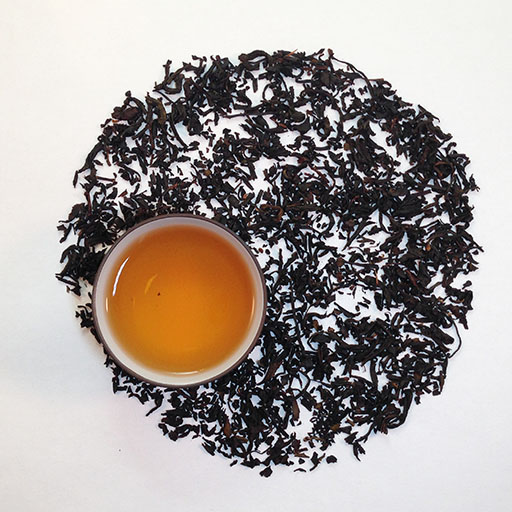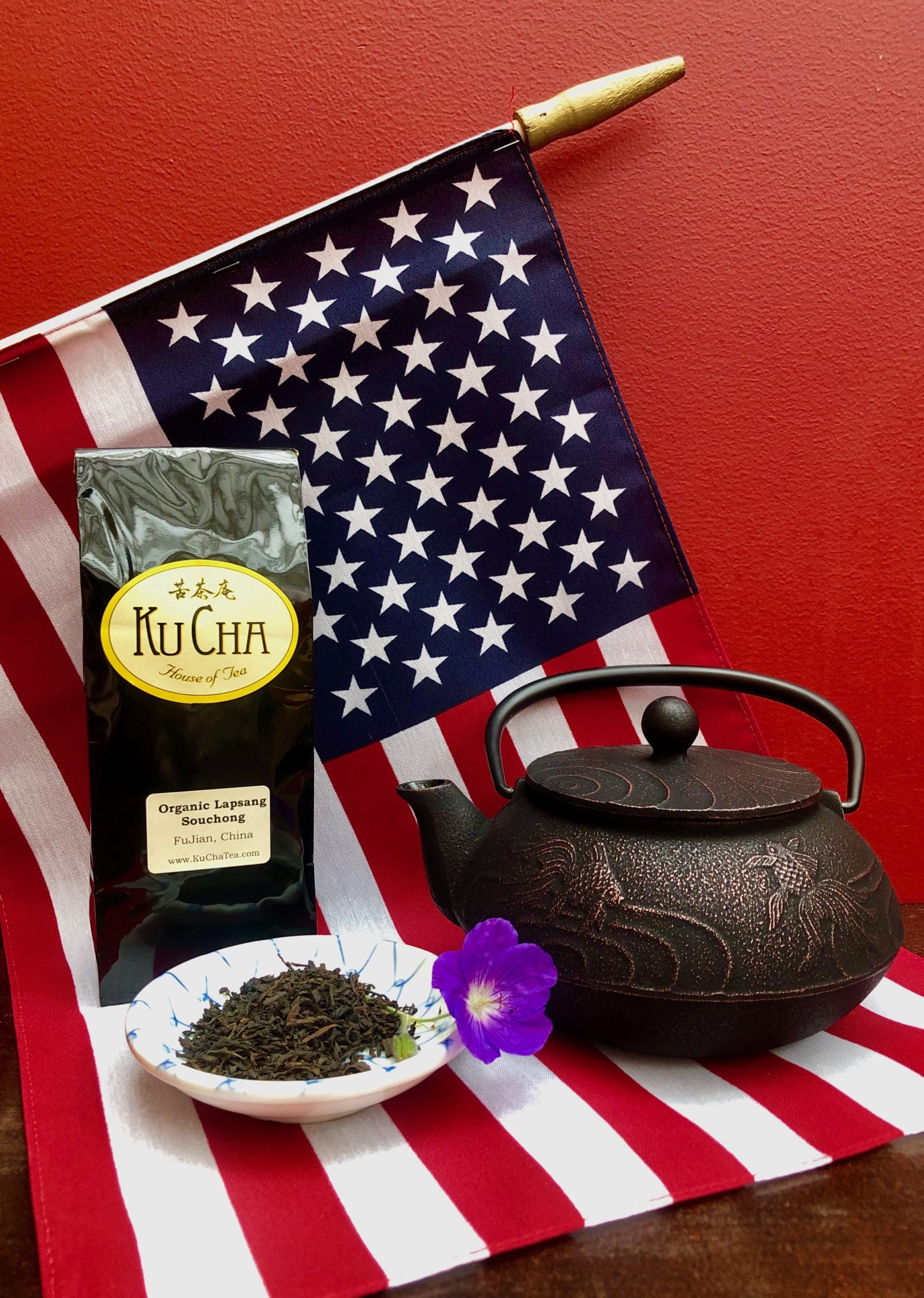Unique tea from China’s Fujian province delivers powerful flavors
Every self-respecting July 4 party involves burgers, hot dogs, chicken and a grill.
But this year, consider honoring the star of the party — the grill — with something that reflects its smoky essence: Lapsang souchong tea.
Unlike most other traditional Chinese black teas, which rely upon the sun and air to dry tea leaves, tea artisans use smoke from burning pine wood to dry Lapsang souchong. The result? Tea offering pronounced aromas and flavors of smoke.
It’s the barbecue of tea. And it’s delicious.
What is Lapsang Souchong tea?

Lapsang souchong originally comes from the mountainous Wuyi region in southeast China’s Fujian province. The region is known for a wide variety of oolong and black teas — in fact, Wuyi is considered the birthplace of oolong and black teas — but only Lapsang souchong gets the smoke treatment.
Lapsang souchong’s embrace of smoke was borne out of necessity, rather than culinary artistry. The story goes that during the Qing era (the last imperial dynasty of China, spanning from the middle of the 17th century until 1912), armies passing through the region disrupted the tea-drying process. To meet demand for Wuyi’s black teas, tea workers sped-up the drying process by using the heat and smoke from fires.
The tea, of course, tasted completely different — and it struck a chord, especially within the export market. Tea drinkers liked it enough to persuade certain Wuyi artisans to keep using smoke to dry some of their teas.
Today, Wuyi remains a tea growing powerhouse, supplying the world with myriad types of oolong and black teas. And a handful of tea makers still craft Lapsang souchong. We are proud to carry the finest Lapsang souchong teas, crafted with true artisanship in Wuyi just as they were hundreds of years ago.
Health and Wellness: Benefits and Considerations of Lapsang Souchong Tea
Potential Health Benefits
Lapsang Souchong tea, like other black teas, is rich in antioxidants such as polyphenols and catechins, which help combat oxidative stress and reduce inflammation. Regular consumption of black tea has been linked to:
- Heart Health: Studies suggest that black tea may help lower LDL cholesterol and improve blood vessel function, promoting cardiovascular health.
- Immune Support: The tea’s antioxidants may support the immune system and protect against infections.
- Digestive Aid: Some evidence indicates that black teas, including Lapsang Souchong, can support gut health by promoting a healthy balance of gut bacteria.
- Mental Alertness: Lapsang Souchong contains caffeine, which can enhance focus, improve mood, and boost energy levels.
Caffeine Content
Lapsang Souchong has a moderate caffeine content, generally lower than green tea but slightly higher than herbal teas. A typical cup contains about 30-60 mg of caffeine, depending on steeping time and leaf quantity. For comparison:
- Green Tea: 20-45 mg of caffeine.
- Coffee: 95-200 mg of caffeine.
This makes Lapsang Souchong a great option for those looking for a gentle energy boost without the jitters associated with coffee.
Myths and Concerns
- Why Is Lapsang Souchong “Banned”? Lapsang Souchong is sometimes rumored to be “banned” due to concerns over the smoke-drying process, which may produce trace amounts of polycyclic aromatic hydrocarbons (PAHs). However, high-quality teas undergo careful regulation, and reputable brands ensure these levels are well within safe limits.
- Does the Smoke Impact Health? The smoky flavor comes from pine smoke, and while it imparts a strong aroma, there’s no conclusive evidence suggesting significant health risks from moderate consumption.

How to Drink Lapsang Souchong Tea
Lapsang Souchong offers a robust, smoky flavor profile, making it a versatile tea that can be enjoyed in multiple ways. Here’s how you can tailor it to your taste and occasion:
Plain or Enhanced?
- Traditional (Plain): Purists recommend drinking Lapsang Souchong plain to fully appreciate its bold, smoky notes.
- With Milk or Sweeteners: For those who find the flavor too intense, adding a splash of milk or a teaspoon of honey can mellow the smokiness and create a richer, creamier experience.
- With Lemon: A slice of lemon adds brightness and complements the tea’s smoky depth.
Complementary Foods
Pair Lapsang Souchong with foods that either enhance or balance its flavor:
- Savory Pairings: Smoked meats, barbecue dishes, or hard cheeses like Gouda.
- Sweet Treats: Dark chocolate, spiced cookies, or fruit preserves.
- Light Snacks: Roasted nuts or tea sandwiches.
Best Times to Enjoy
- Morning Boost: Start your day with a cup of hot Lapsang Souchong for a caffeine boost and a campfire-like aroma to energize you.
- Afternoon Pick-Me-Up: Pair it with a savory or sweet snack for an afternoon break.
- Evening Relaxation: Opt for a lighter brew in the evening for its soothing smoky flavor without overloading on caffeine.
Lapsang souchong tea-making process involves multiple steps
One of Lapsang souchong’s many pleasant surprises revolves around the word souchong, which means fourth and fifth leaves of the tea plant. These leaves, relatively far removed from the prized tea bud (called the pekoe), are coarser than the finer leaves, and don’t have as much flavor. If not for Lapsang souchong, which uses these leaves, they probably wouldn’t find much of a consumer market.
The process for drying tea leaves with pine smoke involves several steps. First, workers fill bamboo baskets called hōnglóng with fresh tea leaves, and hang the baskets over fires made from either pine or cypress wood. This first step withers the leaves.
Workers then line barrels with the leaves, a step that ripens the smoky flavor as the tea oxidizes. Finally, the tea is placed in flat bamboo baskets and roasted again over pine fires. This last step ends the oxidation process, and adds more smoke to the flavor profile. At this point, Lapsang souchong is ready for sale.

Lapsang souchong shares flavors with Scotch whiskey, is embraced by chefs
Lapsang souchong is rich with smoke aromas and flavors; many compare the tea to Scotch whiskey (minus the alcohol part). Chefs have discovered the tea’s unique punch of woodsy flavor, using it dry in spice rubs or brewed and added to things like sauces and stews. Among other things, it imparts a barbecue flavor to things like soup without the smoked meat that normally gets used.
Another interesting use? As the backbone of kombucha tea. Kombucha relies upon tea, and the tea normally is straightforward black tea. But when brewed with Lapsang souchong, kombucha offers a little taste of the forest. It’s an interesting twist to kombucha-making.
Lapsang souchong is not widely consumed across China. Black teas in general were created for the export market, and while many Chinese consumers today do sip black tea, Lapsang souchong is not commonly one of them.
But it’s popular around the world, including in this week’s birthday nation.
Ways to enjoy Lapsang souchong for July 4
Our suggestions for spicing up July 4th picnics with Lapsang souchong? Our first is to simply start the day with a pot or mug of hot tea — we offer brewing directions below. For the July 4th picnic itself, we think Lapsang souchong iced tea would work splendidly, although we also think the iced version should be a bit weaker than a cup of hot Lapsang souchong. People gulp iced tea on hot days; a whisper of smoke, rather than a punch, will go down much easier. Fresh mint in the iced tea? Lemon? Why not? See the recipe below for cold-brewed for Lapsang souchong tea.
Happy July 4th!
How To Brew Hot Lapsang Souchong Tea
Lapsang souchong is brewed like any other black tea. But given the smoke flavor, experimenting with the style is important. Some people savor potent wallops of woodsiness in their cups of Lapsang souchong, while others prefer gentle caresses.
Use 2 teaspoons of tea per each 8-12 ounces of water.
Pour boiling water over the tea, and let steep for two minutes or longer.
For Lapsang souchong, for the first time you brew the tea we recommend tasting at two minutes and then continuing to taste every 30 seconds. You may find 2 minutes is perfect, but you also might think a five-minute steep is ideal.
For a lighter brew, you also can try using water that is 195 degrees (a simple way to do this is bring water to a boil and wait for five minutes before pouring). For stronger brews, just lengthen the steep time.
How To Make Cold-Brew Lapsang Souchong Tea
Add one ounce of Lapsang souchong tea to one gallon of cold, filtered water. Place the vessel in the refrigerator for at least 3 hours. When the cold-brew tea tastes most appealing, strain the tea leaves from the liquid, and store the cold-brew tea in the refrigerator.
FAQs about Lapsang Souchong Tea
Can you cook with Lapsang Souchong tea?
Yes! It’s used in spice rubs, sauces, and even soups to add a smoky flavor to dishes.
Is Lapsang Souchong gluten-free?
Yes, pure Lapsang Souchong tea is naturally gluten-free.
Can Lapsang Souchong be used in iced tea?
Absolutely. It works wonderfully as a cold-brew or iced tea, especially with a hint of mint or lemon.
Does Lapsang Souchong lose its flavor over time?
Over time, tea can lose potency if not stored properly. Keep it in an airtight container away from light and moisture.
What’s the difference between Lapsang Souchong and Earl Grey?
While both are black teas, Earl Grey is flavored with bergamot oil, offering a citrusy profile, while Lapsang Souchong is smoky due to pine smoke drying.

